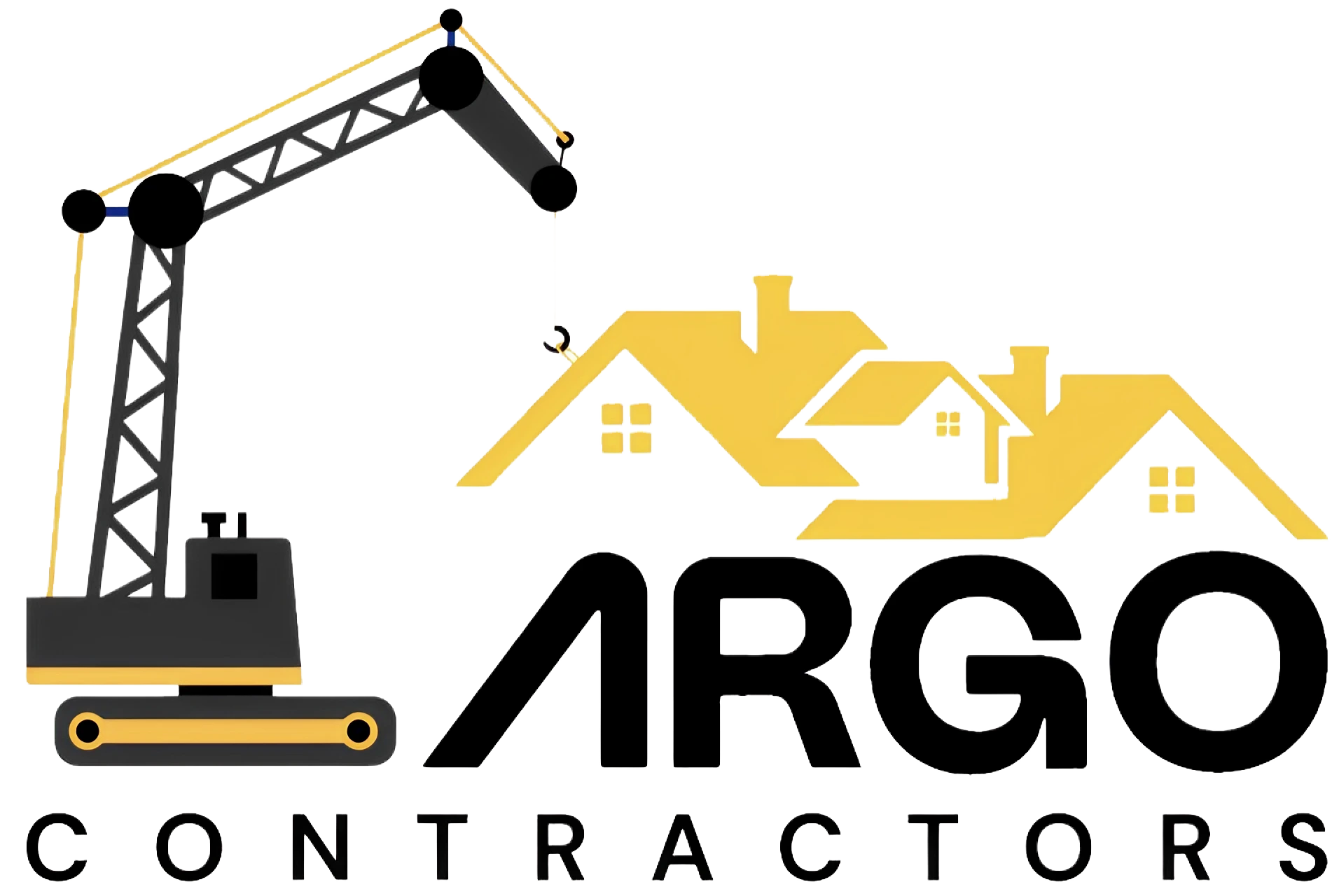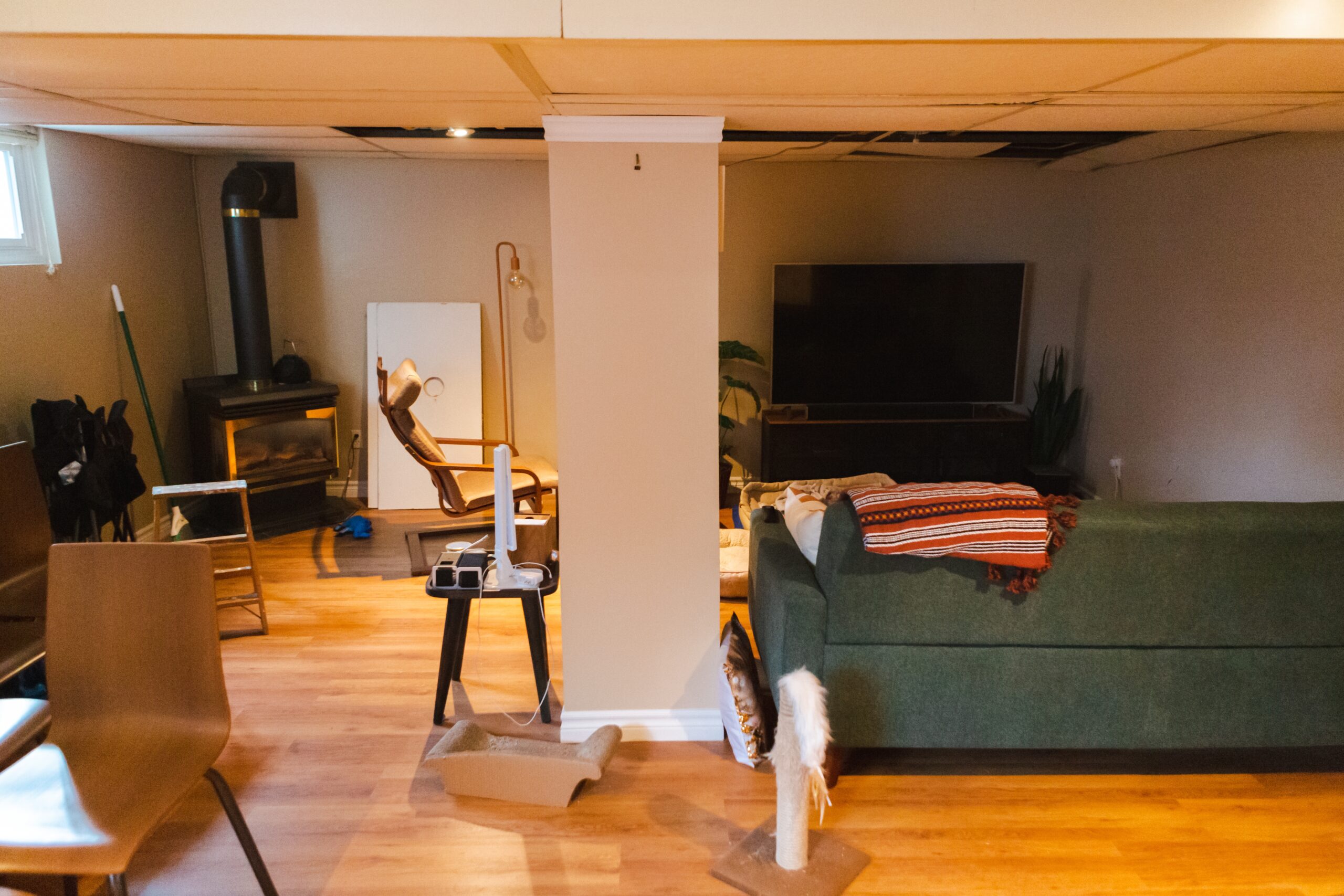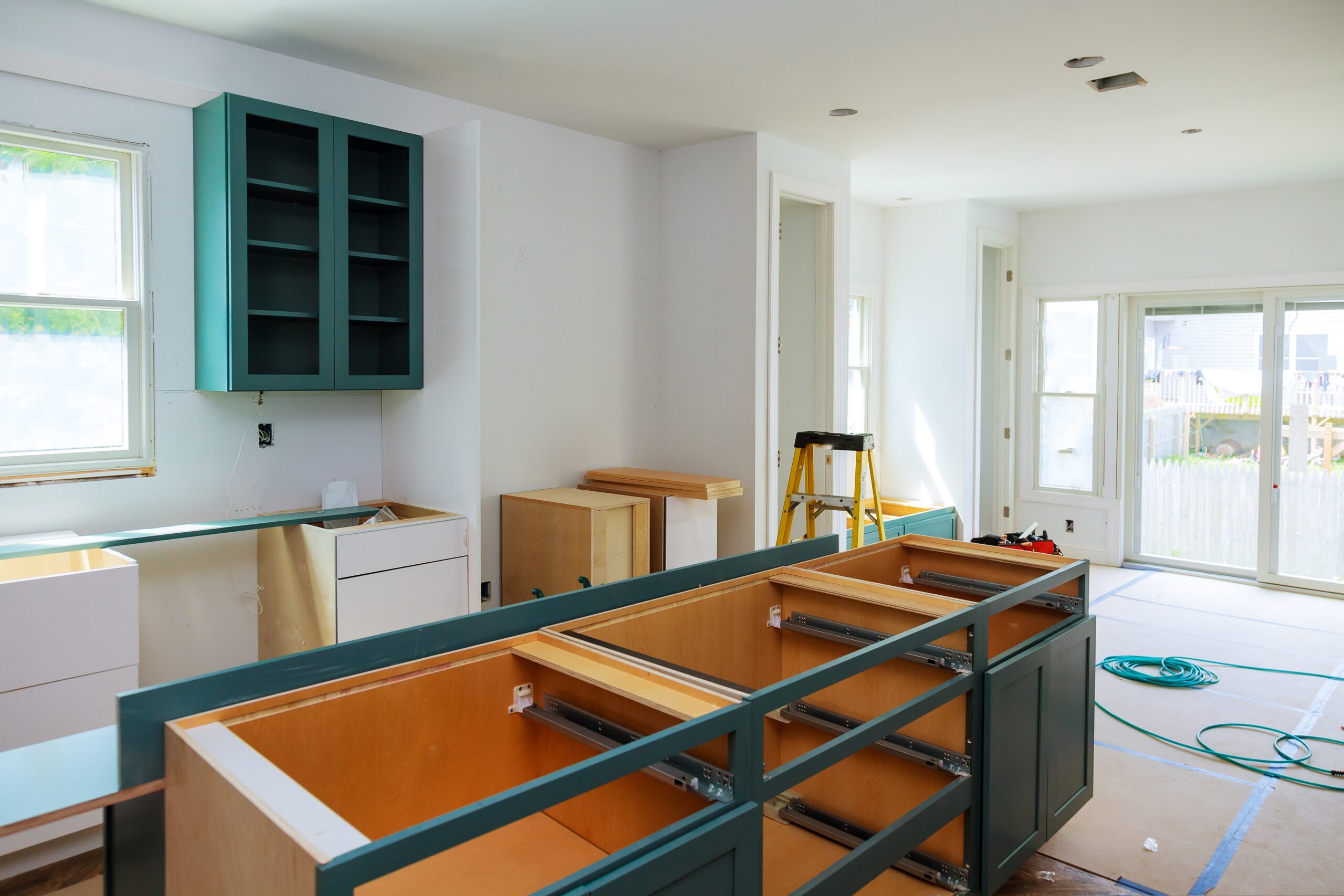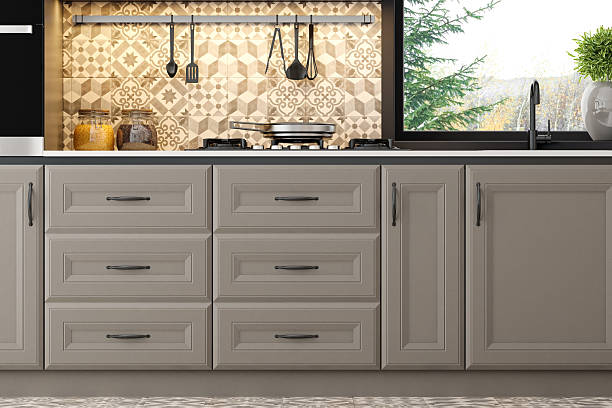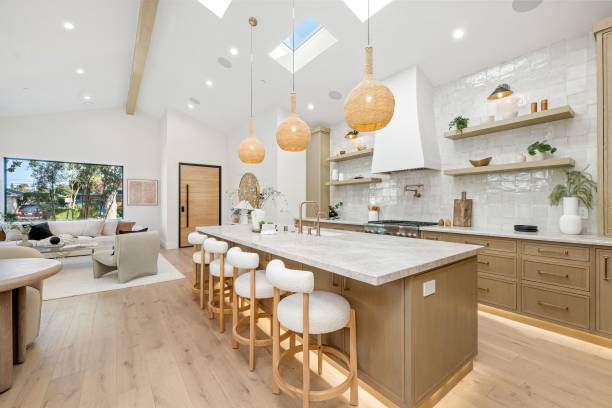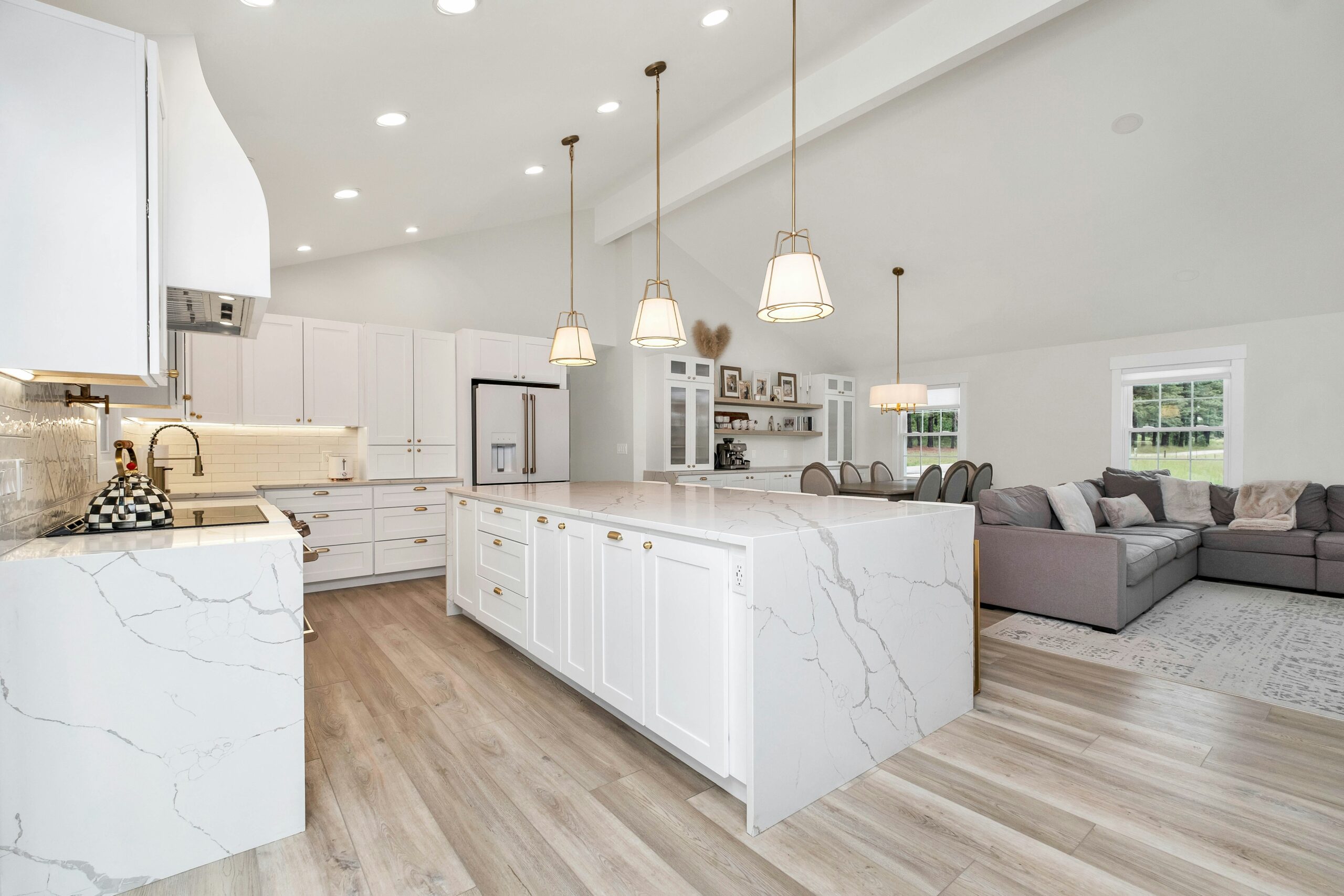The kitchen remodeling process usually follows 8 key steps: planning, budgeting, hiring a remodeling contractor, finalizing the design, demolition, rough-in work (plumbing/electrical), installation (cabinets, countertops, flooring, appliances), and finishing touches. On average, remodels take 6–12 weeks, depending on the project scope, design complexity, and contractor availability.
This guide breaks down each stage in detail, helping you understand what to expect and how to prepare for a smooth, stress-free remodel.
Why Homeowners Remodel Their Kitchens
The kitchen is more than just a cooking area it’s the heart of the home, where family and friends gather. Remodeling a kitchen not only improves day-to-day living but also delivers one of the highest returns on investment in home improvement projects. Working with a trusted partner like Argo Contractor ensures that every stage of the remodel from planning and design to installation and finishing is handled with expertise, precision, and quality craftsmanship.
Reasons homeowners choose to remodel include:
- Outdated layouts that no longer suit modern living.
- The need for more storage, better workflow, or an open-concept design.
- Desire for energy-efficient appliances and sustainable materials.
- Improving home value before selling.
Whether your goal is better functionality, improved aesthetics, or long-term property value, understanding the remodeling process ensures a successful outcome.
Kitchen Remodel vs. Kitchen Renovation: What’s the Difference?
Many homeowners use the terms kitchen remodel and kitchen renovation interchangeably, but they actually refer to different types of updates. A kitchen remodel involves changing the structure or layout of the space for example, removing a wall to create an open-concept design or relocating plumbing and electrical systems. In contrast, a kitchen renovation typically refers to surface-level updates that restore or refresh the kitchen without altering its basic structure. Examples of renovations include painting cabinets, replacing countertops, or installing new flooring. Understanding the distinction between remodeling and renovation is crucial for setting realistic expectations in terms of budget, timeline, and the scope of work involved.
8 Steps of Kitchen Remodeling Process
Kitchen remodeling process involves a series of well-planned steps, from initial design and budgeting to final installation and finishing touches. Each phase ensures your vision is brought to life efficiently and with quality craftsmanship. Following these steps helps avoid delays, control costs, and achieve a functional, beautiful kitchen.

Step 1: Planning and Inspiration
Every successful kitchen transformation begins with a clear vision and thoughtful planning. Start by identifying your must-have features whether it’s a kitchen island, a walk-in pantry, or a double oven. Consider how you use your kitchen on a daily basis: Is it mainly for cooking, entertaining, or casual dining? Decide whether you’re ready for a full remodel or if a smaller renovation, such as cabinet refacing or updating finishes, will meet your needs. Inspiration can be found in design magazines, kitchen showrooms, online galleries, or even by visiting friends’ homes. Create a wish list and prioritize items based on your lifestyle, functionality, and budget. A helpful tip is to document your kitchen’s current “pain points” — such as insufficient counter space, outdated appliances, or poor lighting to guide your design decisions.
Step 2: Setting a Realistic Budget
Budgeting is a critical step that defines what’s possible in your project. On average, homeowners spend between $15,000 and $60,000 on kitchen remodels, though luxury renovations can far exceed that range. Here’s a typical cost breakdown to help guide your planning:
- Cabinets: 25–30%
- Countertops: 10–15%
- Appliances: 10–20%
- Flooring: 10%
- Plumbing & Electrical: 10–15%
- Labor: 20–35%
It’s also wise to reserve an additional 10–15% of your budget for unexpected issues, such as water damage, structural repairs, or electrical upgrades.
Step 3: Choosing the Right Remodeling Contractor
Selecting the right contractor is one of the most important decisions in your remodeling journey. A qualified professional will ensure quality craftsmanship, navigate permit requirements, and keep your project on schedule. When searching for kitchen remodeling services near me, look for contractors who are fully licensed and insured, which ensures both safety and code compliance. Evaluate their experience by asking for recent kitchen remodeling examples and checking online reviews or local references. Be sure to request a detailed written estimate to avoid vague pricing. A reputable contractor often works with a trusted network of subcontractors, such as electricians, plumbers, and cabinet installers, which streamlines the entire process.
Step 4: Finalizing the Design
Once you’ve chosen your contractor, the next phase is design finalization a blend of creativity and functionality. Key decisions at this stage include selecting your kitchen layout (such as galley, L-shaped, U-shaped, or open-concept) and choosing materials for cabinetry (custom, semi-custom, or stock), countertops (granite, quartz, butcher block), and flooring (tile, hardwood, laminate, or vinyl). Backsplashes and finishes allow you to express personal style, while lighting including task, ambient, and accent lighting — adds both practicality and elegance. Many homeowners now opt for energy-efficient appliances and smart technology, such as Wi-Fi-connected ovens or motion-activated faucets, to enhance both convenience and sustainability.
Step 5: Demolition
With the design finalized, demolition marks the start of physical work. During this phase, contractors remove old cabinets, appliances, flooring, and — in some cases — walls to accommodate a new layout. Demolition typically takes a few days, and your contractor will manage debris removal and recycling. This stage may uncover hidden problems, such as water damage or outdated wiring, which must be resolved before construction can continue. A clean and safe foundation is essential for the next steps of the remodel.
Step 6: Rough-In Work (Plumbing, Electrical, HVAC)
Before installation begins, licensed professionals complete the rough-in work behind your walls. This includes plumbing lines for sinks, dishwashers, and refrigerators; electrical wiring for outlets, lighting, and major appliances; and HVAC adjustments if venting or ductwork needs to be moved. Local building inspections are typically conducted during this phase to ensure everything meets safety and code standards. Having a licensed contractor helps simplify these processes and ensures a smooth transition to the installation phase.
Step 7: Installation Phase
This is when your kitchen starts to come to life. Cabinets are installed first, including base units, wall-mounted cabinets, and specialized storage. Countertops are then measured, fabricated, and installed with precision. Flooring materials whether tile, hardwood, or vinyl are laid down next. The backsplash and wall finishes add a decorative touch, followed by lighting fixtures and hardware installation. Finally, major appliances such as the refrigerator, oven, and dishwasher are put in place. Each element is carefully fitted to ensure both visual appeal and long-term durability.
Step 8: Finishing Touches and Final Walkthrough
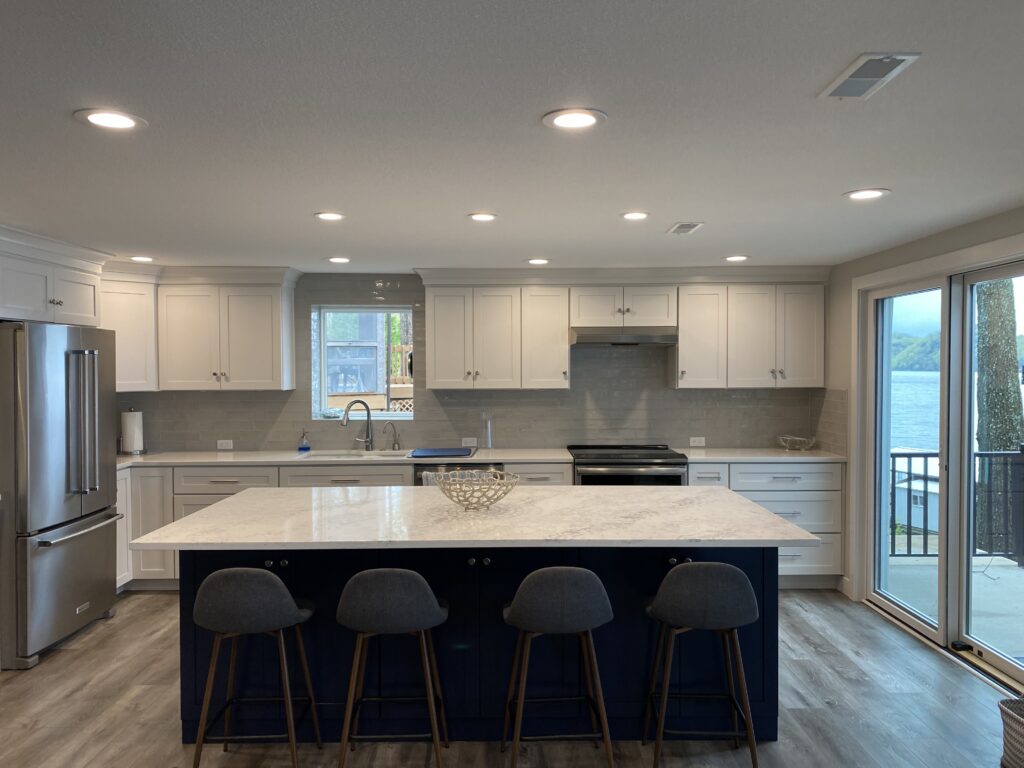
In the final stage, all remaining details are completed. This includes touch-up painting, installing cabinet hardware, sealing countertops and grout, and thoroughly testing plumbing and electrical systems. Your contractor will conduct a final walkthrough, giving you the opportunity to inspect all work from appliance function to cabinet alignment and request any necessary adjustments before officially completing the project.
Kitchen Remodeling Timeline: How Long Does It Take?
The timeline for a kitchen remodel varies depending on the project’s complexity and scale. Small remodels can typically be completed in 4–6 weeks, while mid-range projects may take 8–10 weeks. High-end or luxury remodels often extend beyond 12 weeks. Common delays include backordered materials, permit approval times, and unforeseen issues such as mold, outdated wiring, or structural repairs.
Tips for a Smooth Kitchen Remodel
To keep your project on track, maintain regular communication with your contractor and order materials early to avoid delays. If possible, set up a temporary kitchen to use during the renovation period. While it’s important to stick to your budget, leave room for flexibility to accommodate changes. Most importantly, always hire professionals for tasks involving plumbing, electrical, or structural changes to ensure safety and code compliance.
Common Kitchen Remodeling Mistakes to Avoid
Even with proper planning, mistakes can happen — but many are preventable. One major error is ignoring the kitchen workflow, such as placing appliances too far apart and disrupting the cooking “work triangle.” Overlooking storage needs can lead to clutter, especially if there’s no dedicated pantry or deep drawers. Opting for cheap labor may save money initially but can result in poor workmanship and expensive corrections later. Another frequent oversight is inadequate lighting; a balanced mix of task and ambient lighting is essential for both function and aesthetics. Avoiding these common pitfalls will improve your kitchen’s performance and help you stay within budget and schedule.
Final Thoughts
Remodeling your kitchen is a major project, but by following a step-by-step process, you can transform the space with confidence. From planning and budgeting to design, installation, and finishing touches, every stage plays a role in creating a functional, stylish, and valuable kitchen.
Whether you’re upgrading for personal enjoyment or preparing to sell, a professional kitchen remodel enhances your home and makes everyday life more enjoyable.
FAQs
Q: Do I need permits for a kitchen remodel?
Yes, especially for plumbing, electrical, or structural changes. Your contractor usually handles applications and inspections.
Q: Can I remodel my kitchen without replacing cabinets?
Yes. Options include cabinet refacing or refinishing, which cost less than full replacements.
Q: What’s the most expensive part of a kitchen remodel?
Cabinetry often takes up the largest portion of the budget, followed by countertops and labor.
Q: How do I choose the best kitchen remodeling contractor near me?
Look for experience, reviews, detailed contracts, and proof of licensing and insurance.
Q: Is a kitchen remodel worth it?
Yes, it increases home value, improves daily functionality, and makes your space more enjoyable.
